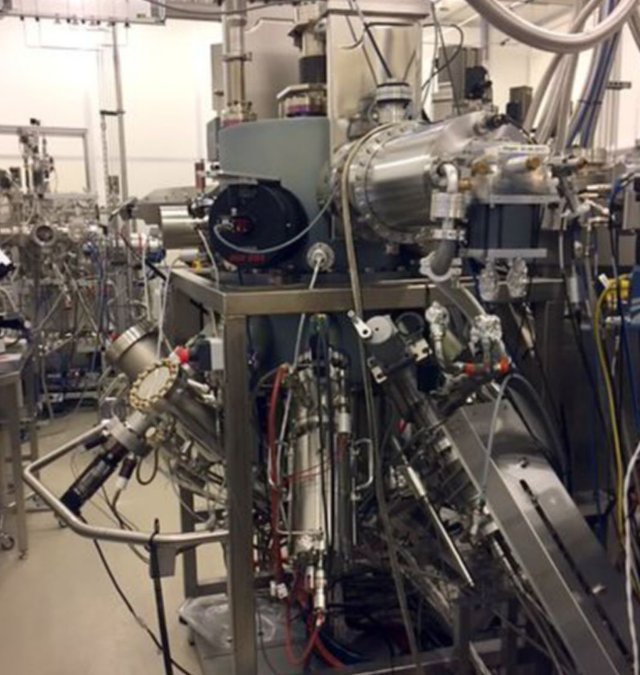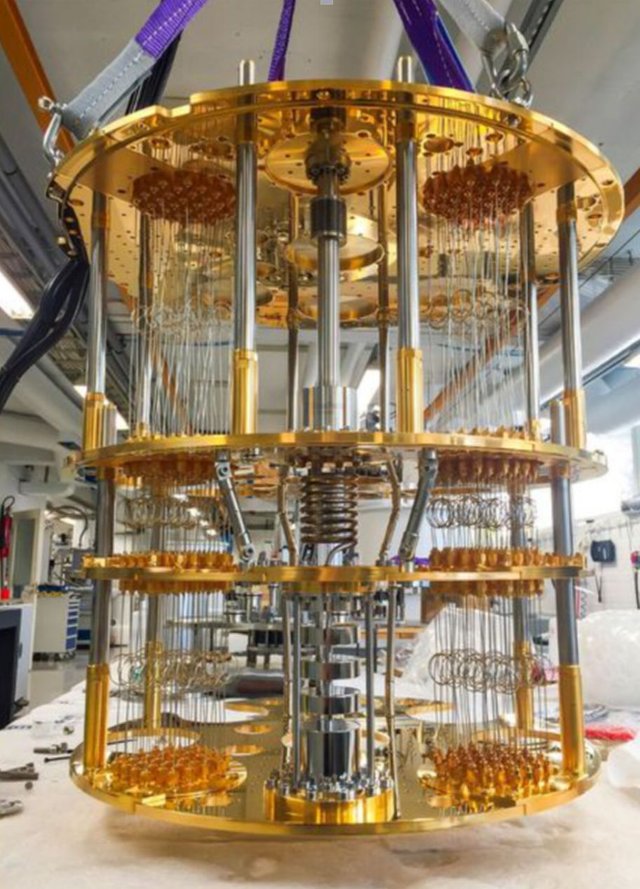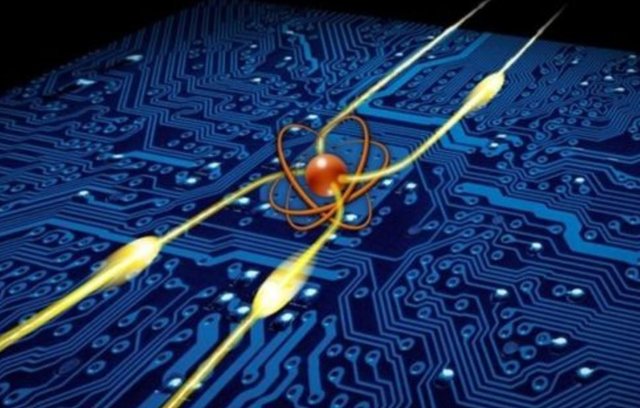At the Delft University of Technology of the Microsoft research center (the Netherlands), "quantum refrigerator" this several large cylindrical tube is striking, in which each tube is used to loop cooling to the temperature is colder than outer space, cost more than $500000. The device helped Microsoft researchers make Majorana fermion ,and Microsoft wanted to make it part of its quantum computing program to make a real quantum computer.
According to a study published in the journal Nature, there is now clear evidence of the existence of Majorana fermion. It is a basic particle, and is its own antiparticle, also known as the "angel particle".

A dust free room built for nanoscale circuits in Microsoft research.
The unique nature of Majorana fermion means that they can be used to make quantum computers with lower error rates, or even produce products that can be marketed. At present, the design of other companies is too high to be practical. Microsoft is now trying to use Majorana fermion to produce qubits. , Microsoft's chief executive Satya Nadella said, quantum computing is one of the three breakthrough technologies (the other two, respectively is artificial intelligence and augmented reality), in these areas as is vital to the future to the company. In the quantum computing industry, Microsoft eventually hopes to achieve a profit by renting quantum computers to companies that need it through its cloud computing network. But Microsoft is already at a disadvantage in the quantum race. In 2011, d-wave Systems inc. became the first company to sell quantum computers, and Google and IBM had devices that were considered the closest thing to a "quantum advantage".

The "quantum refrigerator" keeps the qubits at the ultra-low temperatures needed.
Although, by contrast, Microsoft has invested substantial resources proved that using Majorana fermion to build a better performance of a quantum computer is feasible, but it has not yet produced a computing devices can work.
The concept of Majorana fermion was proposed by Italian theoretical physicist Ettore Majorana in 1937, but only in 2012 did the researchers have observational evidence that such unique fermions did exist. Although these loopholes in early experiments, has led some scientists believe that these observations may be caused by other phenomena, not Majorana fermion, but in the new paper, Microsoft's scientists provides more clear data. Next to the cooling device, the Microsoft team is using 150 pounds of magnets to try to control the Majorana Fermi to produce qubits. Leo Kouwenhoven, a physicist who is now Microsoft's chief scientist, admits that using magnets is a double-edged sword, because their size and quality make it harder to experiment. But Mr Kouwenhoven says Microsoft thinks the quantum computing device it makes will be 1,000 to 10,000 times more accurate than any existing device. Kouwenhoven says the team's goal is to make a working qubit by the end of the year using Majorana fermion. On the floor of the refrigerator, a young graduate student sits on a computer analyzing a color graphic display that shows what is happening inside the refrigerator. Although the foreground is very good, it is difficult to obtain accurate measurement results at high magnetic energy level. So far, the laboratory has not been able to see evidence of a systematic transition from Majorana fermion to the topological phase.
According to a recent paper published in Nature by Microsoft's quantum computing research team, they have found evidence of existence. According to Mayo, planar symmetry theory the Majoan fermion antiparticle is itself, as a result, Majoan zero mode of tunneling spectrum in the differential conductance peak performance for a zero, and the peak is quantized, 2 e ^ 2 / h. Therefore, tunneling spectrum is a very important means to find the existence of Majoana.

In previous experiments, the peak value observed by the researchers was significantly less than 2e 2/h, which was only recently reported to be close to 2e 2/h. And latest articles, according to researchers in indium antimonide based on superconducting aluminum shielding wire in the system observed amplitude for 2 e ^ 2 / h tunneling spectrum intensity, and the amplitude under the condition of the changing parameters remain the same, but also prove that the characteristics of the quantized. Researchers by changing the electric field, magnetic field and the temperature influence to detect the robustness of the system level, further ruled out the possibility that the other, the experimental results that the existence of Mayo rana zero mode, the experimental results for subsequent topological quantum computer implementation laid the important foundation. But at the same time also want to see, the result just announced in the experiment, the possibility of a topological quantum bit structure, this is far from topological quantum computer, also need to be solved for topological quantum bit of weaving a series of problems such as the operation. As mentioned earlier, the main technical difficulties in topological quantum computer early, instead of behind the qubits fault-tolerant part of the difficulty is small, therefore, the results is very meaningful for Microsoft.
In addition, while the theory is on the side of Kouwenhoven, Microsoft's competitors are also pushing the commercialization of quantum computers based on other technologies. Unlike IBM and Google's research on superconducting quantum computers, Microsoft has bet on a localized quasiparticle such as Majorana fermions. Using this quasiparticle topological quantum bit has very low error rate, doesn't need a large number of qubits to fault tolerance, in "a" (topological quantum bits) against the "best" (other types of quantum bits), use a small number of qubits to realize the universal quantum computer. But unfortunately, this kind of "angel" particles are still exists only in theory, the researchers have not even sure of evidence to show that they discovered the theoretically predicted in the experiment of "angel" particles.
Microsoft now has a team of scientists from around the world working in laboratories in the United States, the Netherlands, Denmark and Australia. One of Microsoft's most experienced executives, Todd Holmmdahl, is currently in charge of the project, which was previously responsible for the Xbox console and the HoloLens augmented reality goggles program. In an interview last November, Holmmdahl said Microsoft plans to introduce available quantum computers in the market within five years. The delft research lab could also be used by other researchers who want to make quantum computers in other directions, including a team funded by rival Intel.
Reference: